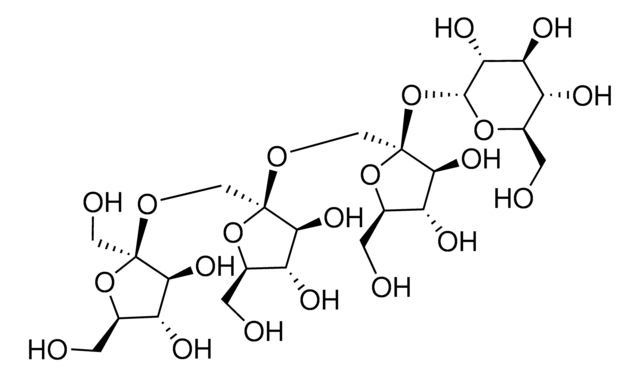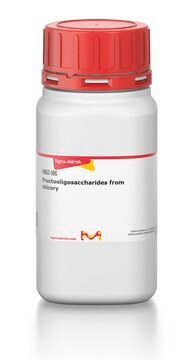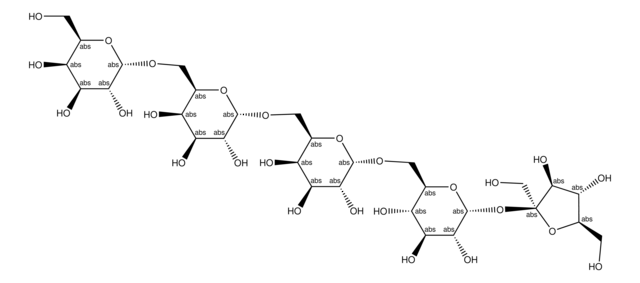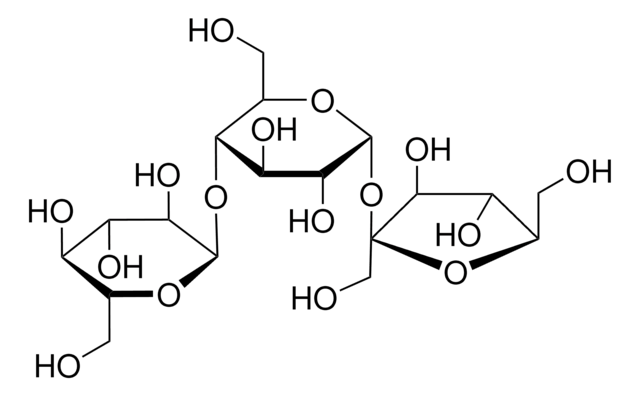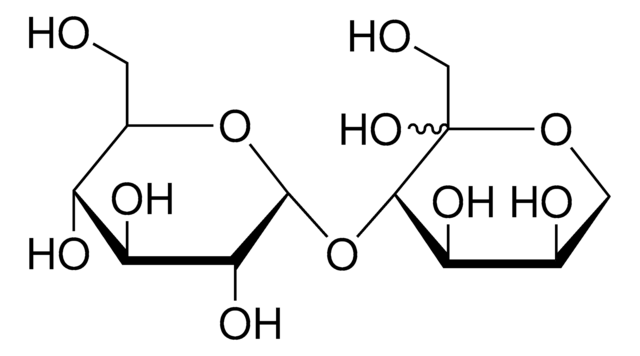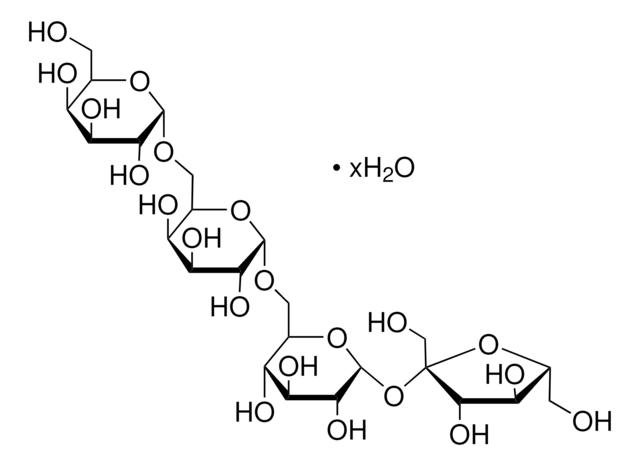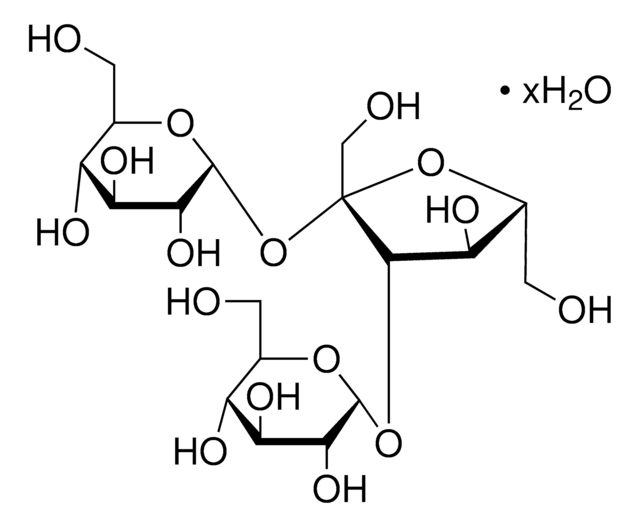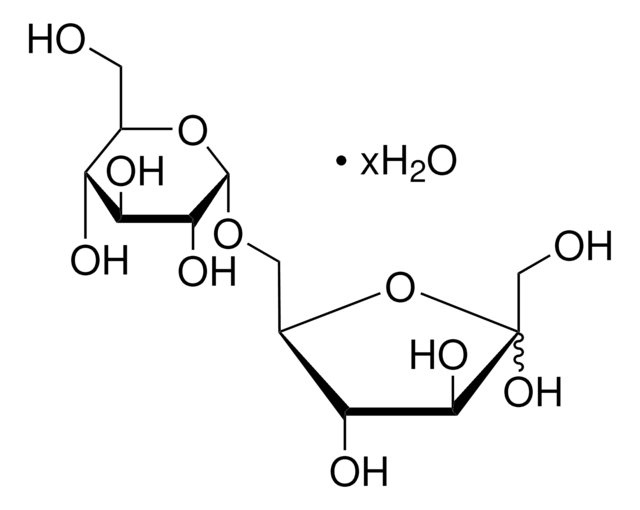Kluczowe dokumenty
72555
1-Kestose
analytical standard
Synonim(y):
β-D-Fruf-(2→1)-β-D-Fruf-(2→1)-α-D-Glup
About This Item
Polecane produkty
klasa czystości
analytical standard
Poziom jakości
Próba
≥98.0% (HPLC)
klasy chemiczne analitów
oligosaccharides
metody
HPLC: suitable
gas chromatography (GC): suitable
Zastosowanie
food and beverages
Format
neat
temp. przechowywania
2-8°C
ciąg SMILES
OC[C@H]1O[C@H](O[C@]3(CO[C@]2(CO)O[C@H](CO)[C@@H](O)[C@@H]2O)O[C@H](CO)[C@@H](O)[C@@H]3O)[C@H](O)[C@@H](O)[C@@H]1O
InChI
1S/C18H32O16/c19-1-6-9(23)12(26)13(27)16(31-6)34-18(15(29)11(25)8(3-21)33-18)5-30-17(4-22)14(28)10(24)7(2-20)32-17/h6-16,19-29H,1-5H2/t6-,7-,8-,9-,10-,11-,12+,13-,14+,15+,16-,17-,18+/m1/s1
Klucz InChI
VAWYEUIPHLMNNF-OESPXIITSA-N
Powiązane kategorie
Opis ogólny
Zastosowanie
Inne uwagi
Kod klasy składowania
11 - Combustible Solids
Klasa zagrożenia wodnego (WGK)
WGK 3
Temperatura zapłonu (°F)
Not applicable
Temperatura zapłonu (°C)
Not applicable
Środki ochrony indywidualnej
Eyeshields, Gloves, type N95 (US)
Wybierz jedną z najnowszych wersji:
Certyfikaty analizy (CoA)
Nie widzisz odpowiedniej wersji?
Jeśli potrzebujesz konkretnej wersji, możesz wyszukać konkretny certyfikat według numeru partii lub serii.
Masz już ten produkt?
Dokumenty związane z niedawno zakupionymi produktami zostały zamieszczone w Bibliotece dokumentów.
Klienci oglądali również te produkty
Nasz zespół naukowców ma doświadczenie we wszystkich obszarach badań, w tym w naukach przyrodniczych, materiałoznawstwie, syntezie chemicznej, chromatografii, analityce i wielu innych dziedzinach.
Skontaktuj się z zespołem ds. pomocy technicznej